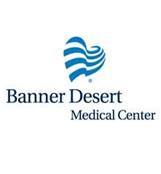Coronary Artery Disease
What is coronary artery disease?
Hardening of the arteries occurs when cholesterol, fat, or other substances accumulate on the inner walls of arteries to form hard structures called plaques. With the passage of time, these plaques can form obstructions in the arteries and cause problems throughout the body.
When one of these obstructions forms in the coronary arteries, the heart cannot get enough oxygen to function properly. This is called coronary artery disease.
What causes coronary artery disease?
Coronary artery disease is thought to begin, sometimes as early as childhood, with an injury or damage to the inner layer of a coronary artery. More often, the process that causes your arteries to harden coincides with aging. With the passage of time, the buildup of plaque in your arteries makes them stiffen. This, in turn, makes it more difficult for blood to flow through them.
Clots may form in these narrowed arteries and block blood flow. Pieces of plaque can also break off and move to smaller blood vessels, getting wedged in and blocking them. Either way, the blockage starves tissues of blood and oxygen which can result in damage or tissue death. This is a common cause of heart attack and stroke. High blood cholesterol levels can cause hardening of the arteries at a younger age.
What are the common symptoms of coronary artery disease?
Hardening of the arteries does not cause symptoms until blood flow to part of the body becomes slowed or blocked. If the arteries to the heart become narrow, blood flow to the heart can slow down or stop. This can cause chest pain, shortness of breath, and other symptoms. Narrowed or blocked arteries may also cause problems and symptoms in your intestines, kidneys, legs, and brain.
Is coronary artery disease dangerous?
Because coronary artery disease often develops over decades, it can go virtually unnoticed until you suffer a heart attack. It is not possible to reverse hardening of the arteries once it occurs. However, lifestyle changes and treating high cholesterol levels can prevent or slow the process from becoming worse.
What factors increase your risk of coronary artery disease?
For many people, high cholesterol levels are the result of their unhealthy lifestyle choices, most often their high-fat diet. Other risk factors for dangerously high cholesterol include heavy alcohol use, lack of exercise, and being overweight. Beyond high cholesterol, additional risk factors for hardening of the arteries are: diabetes, family history of hardening of the arteries, high blood pressure, and smoking.
Researchers are examining other possible risk factors, including sleep apnea. This is a disorder which causes you to repeatedly stop and start breathing while you sleep. This cuts your blood-oxygen levels, increasing blood pressure and straining your cardiovascular system.
It also causes unusually high levels of C-reactive protein (CRP), an indicator that you have swelling somewhere in your body; abnormal levels of the amino acid homocysteine; the blood-clotting protein, fibrinogen; and lipoprotein, a substance that may disrupt the body’s ability to dissolve blood clots.
How is coronary artery disease detected?
By listening to the heart and lungs with a stethoscope, a whooshing or blowing sound can be heard that may indicate that may indicate hardening of the arteries. While some guidelines suggest having your first cholesterol test at as early as age 20, most doctors recommend a first screening test by age 35 in men, and by age 45 in women.
Certain imaging tests permit your doctor to examine how well blood moves through your arteries, including Doppler tests that use ultrasound; magnetic resonance arteriography (MRA), a special type of MRI scan; special CT scans called CT angiography; and arteriograms or angiography which utilizes x-rays to see inside the arteries.
How is coronary artery disease treated?
Even in the absence of specific evidence of coronary artery disease, your doctor may recommend aggressive treatment of risk factors related to it. Early diagnosis and treatment may stop progression of coronary artery disease and help prevent a heart attack. The single most important change you can make to reduce your risk of coronary heart disease is to quit smoking. Other lifestyle changes can also reduce your risk of hardening of the arteries.
These include: avoiding fatty foods and eating well-balanced meals that are low in fat and cholesterol; limiting how much alcohol you drink (one drink a day for women, two a day for men); exercising for 30 minutes each day if you are not overweight, and for 60 – 90 minutes a day if you are; monitoring your blood pressure, checking it every 1-2 years before age 50 and yearly after age 50; if your blood pressure is high, lowering it and keeping it under control.
Is coronary artery disease a common condition?
Coronary artery disease generally poses a greater threat to men than women. However, the risk for women increases after menopause. Coronary artery disease is the leading cause of death worldwide.











